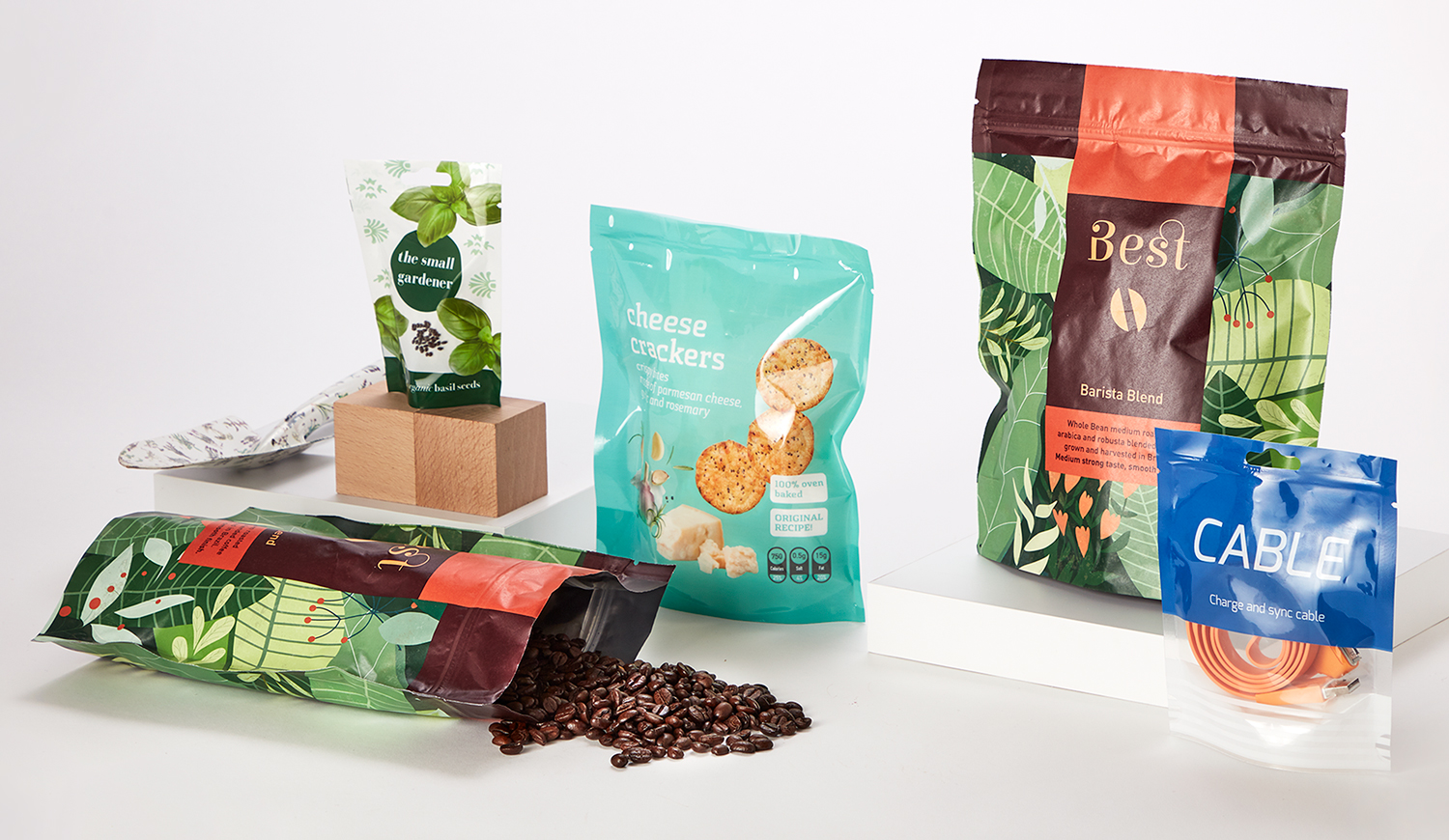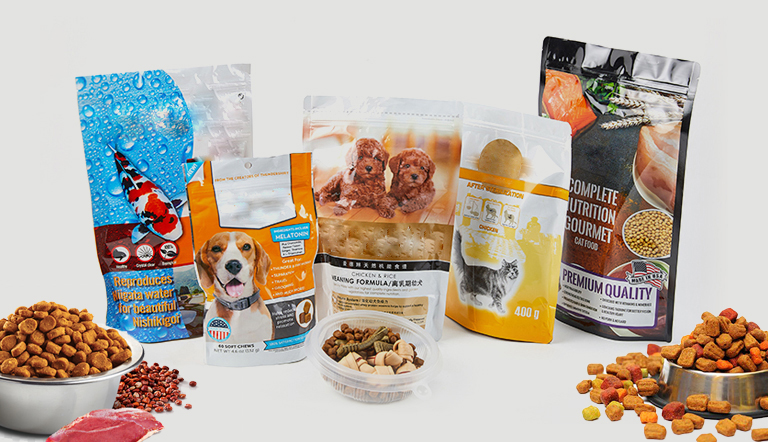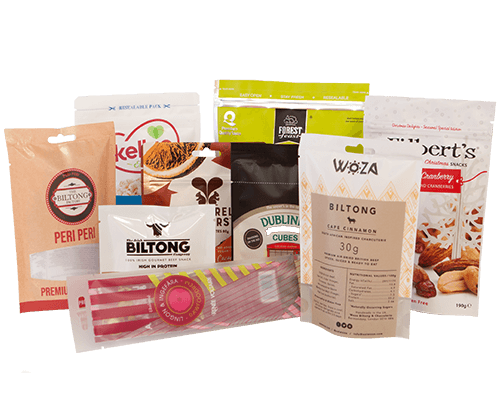Are you looking for the perfect way to package your products? This article dives deep into the world of flexible packaging materials, explaining the different types of flexible packaging available and how to choose the right ones for your business needs. Understanding the nuances of packaging material is crucial for product protection, extending shelf life, and creating eye-catching product packaging. This guide is designed to equip you with the knowledge to make informed decisions, ensuring your products stand out on store shelves and reach your customers in perfect condition.
1. What is Flexible Packaging and Why is it a Game Changer?
Flexible packaging refers to packaging whose shape can be readily changed. Unlike rigid packaging options like bottles or cans, flexible packaging utilizes flexible materials such as plastic films, paper, and foil to create pouches, bags, and wraps. This type of packaging has revolutionized the packaging industry due to its versatility and numerous advantages.
One of the key benefits of flexible packaging is its efficiency. It uses less material compared to rigid packaging, leading to reduced transportation costs and a smaller environmental footprint. Think about a bag of chips versus a rigid plastic container – the difference in materials used is significant. Furthermore, flexible packaging excels at protecting food products and other sensitive items. Its ability to create airtight seals enhances product freshness and extends shelf life, minimizing spoilage and waste. This is especially crucial for the food and beverage industry.
2. Exploring the Vast Landscape: What are the Different Types of Flexible Packaging?
The world of flexible packaging is incredibly diverse, offering a wide range of products to suit various needs. From simple plastic wraps to sophisticated multi-layer laminate structures, the options are plentiful. Some common types of flexible packaging include:
- Pouches: These versatile packaging options come in various forms, such as stand-up pouches, flat pouches, and gusseted pouches. We, as a factory specializing in flexible packaging solutions, offer a diverse range of pouch styles including Soft Services Packaging Accordion Pouch Bags, Cosmetics Packaging Back-Sealed Pouch Bags, China Plastik Packaging Envelope Pouch, Soft Touch Pack Flat Pouch, Flat Bottom Pouch, All Natural Packaging Gusseted Pouch Bag, Film Wrapping Hand-Hole Pouch Bag, Green Beauty Packaging Insert Pouch Bags, Popular Flexible Packaging Irregular Shape Pouch, Popular China Eco Friendly Packaging Nozzle Pouch Bags, and Plastic For Packaging Three-Side Seal Pouch.
- Bags: This category includes everything from simple polyethylene (PE) bags to more complex structures used for retail and industrial applications.
- Wraps: Plastic wraps are commonly used for products like confectionery, snacks, and baked goods.
- Rollstock: This refers to rolls of flexible packaging film that are used on form-fill-seal machines to create product packaging in-house.

3. The Backbone of Protection: Understanding Packaging Film and Its Importance.
Packaging film is the foundational flexible packaging material used in flexible packaging. This flexible film acts as the primary barrier, protecting the contents from external elements like moisture, oxygen, and light. The film used can be a single layer of plastic or a laminate of multiple plastic films and other materials used, each providing different properties.
The selection of the appropriate packaging film type is critical for maintaining product freshness and extending shelf life. For instance, food packaging often requires films with excellent barrier properties against oxygen to prevent spoilage. The durability of the film is also essential to withstand the rigors of handling and transportation. Considering the specific requirements of your different products is key to choosing the right packaging film.
4. Delving Deeper: What are the Key Materials for Flexible Packaging?
The world of materials for flexible packaging is vast and ever-evolving. Here are some of the common material choices:
- Polyethylene (PE): A widely used material due to its low cost, flexibility, and good moisture barrier properties. Different densities of polyethylene offer varying levels of strength and barrier properties.
- Polypropylene (PP): Known for its high tensile strength and heat resistance, polypropylene is often used for products that require retort processing or high-temperature sealing.
- Polyester (PET): PET film offers excellent tensile strength, clarity, and temperature resistance. It’s commonly used as an outer layer in laminated packaging for its printability and scuff resistance.
- Nylon (Polyamide, PA): Offers superior puncture resistance and high-temperature resistance, making it suitable for vacuum packaging and food packaging.
- Aluminum Foil: Provides an absolute barrier properties against light, oxygen, and moisture, making it ideal for extending the shelf life of sensitive food products and pharmaceuticals.
The choice of material type significantly impacts the performance and suitability of the flexible packaging.
5. The Power of Plastic: What Role Does Plastic Play in Flexible Packaging?
Plastic is a dominant force in the flexible packaging landscape due to its versatility, cost-effectiveness, and diverse barrier properties. Various plastic films, including polyethylene (PE), polypropylene (PP), and pet film, are mostly used in the production of pouches, bags, and wraps.
Plastic offers several key advantages:
- Excellent Barrier Properties: Different types of plastic provide varying degrees of protection against moisture, oxygen, and other environmental factors, crucial for maintaining product freshness.
- Durability: Plastic films are generally durability and resistant to tearing and puncturing, ensuring the integrity of the product packaging during transit and handling.
- Printability: Plastic films offer excellent surfaces for high-quality printing, allowing for vibrant and eye-catching designs that attract consumers on store shelves.
- Cost-Effectiveness: Compared to some other packaging material options, plastic is often a more economical choice, especially for large-scale production.
While plastic offers significant benefits, the packaging industry is also increasingly focused on sustainability. This has led to the development of more environmentally friendly plastic options, including recyclable and biodegradable polymers.

6. Beyond the Basics: What are Some Different Types of Flexible Packaging Solutions Available?
Flexible packaging offers numerous innovative packaging solutions beyond the standard bags and wraps. Here are a few examples:
- Stand-up Pouches: These pouches can stand upright on store shelves, offering excellent display appeal. They often feature zippers or spouts for resealability and convenience.
- Spout Pouches: Ideal for liquids, gels, and powders, spout pouches offer easy dispensing and resealability. Our Popular China Eco Friendly Packaging Nozzle Pouch Bags are a prime example.
- Shaped Pouches: These pouches are custom-designed in unique shapes to enhance brand recognition and product differentiation. Our Popular Flexible Packaging Irregular Shape Pouch showcases this capability.
- Fin Seal Pouches: A common and cost-effective type of packaging where the edges of the film are sealed together to create a fin-like seal. Our Cosmetics Packaging Back-Sealed Pouch Bags fall under this category.
- Gusseted Bags: These bags have side or bottom gussets that expand to provide more volume, making them suitable for larger quantities of different products. Our All Natural Packaging Gusseted Pouch Bag is a testament to this design.
7. Making the Smart Choice: How Do You Choose the Right Flexible Packaging for Your Product?
Choosing the perfect packaging requires careful consideration of several factors. Here’s a step-by-step approach:
- Product Characteristics: What are the physical properties of your product? Is it a liquid, solid, or powder? Is it sensitive to moisture or oxygen? Understanding your product’s needs is paramount.
- Barrier Requirements: How crucial is it to protect your product from external elements? Food packaging for perishable goods will require superior barrier properties compared to packaging for non-perishable items.
- Shelf Life Goals: How long do you need your product to remain fresh on the store shelves? This will influence the materials used and the barrier properties required.
- Distribution and Handling: How will your product be transported and handled? Fragile items may require more durability in their packaging.
- Budget: What is your budget for packaging solutions? While quality is essential, finding cost-effective packaging options is also important.
- Sustainability Goals: Are you committed to environmentally friendly packaging? Explore materials available such as recyclable or compostable plastic material.
- Marketing and Branding: How do you want your product packaging to look and feel? Consider the print quality and the overall aesthetic appeal. Mark Thompson, a company owner or packaging procurement manager like our typical customer, understands the importance of brand image.
8. Putting it to Work: How Can You Effectively Use Flexible Packaging for Your Business?
Flexible packaging is used across a wide range of products and industries. Here are some examples of how you can leverage its benefits:
- Food and Beverage: From snacks and confectionery to beverages and frozen foods, flexible packaging provides excellent barrier properties, extends shelf life, and offers convenient formats like stand-up pouches and spout pouches.
- Personal Care and Cosmetics: Flexible packaging is ideal for shampoos, lotions, and other personal care items. Our Cosmetics Packaging Back-Sealed Pouch Bags and Green Beauty Packaging Insert Pouch Bags cater to this market.
- Household and Cleaning Products: Detergents, cleaning solutions, and other household products can be effectively packaged in durable and leak-proof flexible pouches.
- Pet Food: Flexible packaging provides the necessary barrier properties to keep pet food fresh and appealing.
- Pharmaceuticals: Certain medications and medical devices utilize flexible packaging for its barrier properties and tamper-evident features.
By understanding the specific needs of your different products, you can select the right packaging to ensure optimal protection and presentation.
9. Navigating the Market: What Should You Consider When Choosing Flexible Packaging Manufacturers?
Selecting the right flexible packaging manufacturers is crucial for ensuring consistent quality and reliable supply. Here are key factors to consider:
- Experience and Expertise: Look for manufacturers with a proven track record in the flexible packaging industry. We, as a factory specializing in flexible packaging solutions with advanced printing and converting capabilities, bring years of expertise to the table.
- Production Capabilities: Ensure the manufacturer has the necessary equipment and technology to produce the types of flexible packaging you require, including advanced printing options.
- Material Options: Do they offer a diverse range of materials for flexible packaging, including sustainable options?
- Quality Control: What quality control measures do they have in place to ensure consistent product packaging quality? This addresses Mark Thompson’s key concerns about print and material quality.
- Certifications and Compliance: Do they hold relevant certifications, such as food safety certifications?
- Lead Times and Reliability: Can they meet your production timelines and deliver consistently? Long lead times are a major pain point for customers like Mark Thompson.
- Customer Service and Communication: Are they responsive and easy to communicate with? As Allen from China, we understand the importance of clear communication with our Main Export Countries: USA, North America, Europe, and Australia.
- Pricing: While cost is a factor, prioritize value and quality over the absolute cheapest option. Mark Thompson is quality-sensitive but also seeks competitive pricing.
Our participation in exhibitions allows potential customers like Mark to see our capabilities firsthand.
10. The Future is Flexible: What Trends are Shaping the Flexible Packaging Industry?
The flexible packaging industry is constantly evolving, driven by consumer demand and technological advancements. Key trends shaping its future include:
- Sustainability: The demand for environmentally friendly packaging is increasing. This includes the development and use of recyclable, compostable, and bio-based flexible materials.
- Advanced Barrier Technologies: Innovations in film technology are leading to improved barrier properties, extending the shelf life of food products and reducing food waste.
- Digital Printing: Digital printing offers greater flexibility for shorter runs, customized packaging, and faster turnaround times.
- Smart Packaging: Integrating technologies like QR codes and NFC tags into flexible packaging allows for enhanced consumer engagement and traceability.
- Lightweighting: Continuous efforts are being made to reduce the amount of material used in flexible packaging without compromising performance, further contributing to sustainability goals.

By staying informed about these trends, businesses can make strategic decisions about their packaging needs and choose flexible packaging solutions that are both effective and forward-thinking. We strive to offer innovative and sustainable packaging solutions that align with these trends, catering to customers like Mark Thompson who are interested in such advancements.
Key Takeaways:
- Flexible packaging offers numerous advantages, including reduced material usage, lower transportation costs, and excellent barrier properties.
- Understanding the different types of flexible packaging materials, such as polyethylene, polypropylene, and PET film, is crucial for selecting the right materials for your product.
- Packaging film is the fundamental component, providing protection and extending shelf life.
- When choosing flexible packaging, consider your product’s characteristics, barrier properties requirements, shelf life goals, and sustainability objectives.
- Selecting the right flexible packaging manufacturers with experience, quality control, and a commitment to customer service is essential.
- The future of flexible packaging is being shaped by trends like sustainability, advanced barrier technologies, and digital printing.
By understanding the intricacies of flexible packaging, you can make informed decisions that benefit your products, your brand, and the environment.
Post time: 01-04-2025

